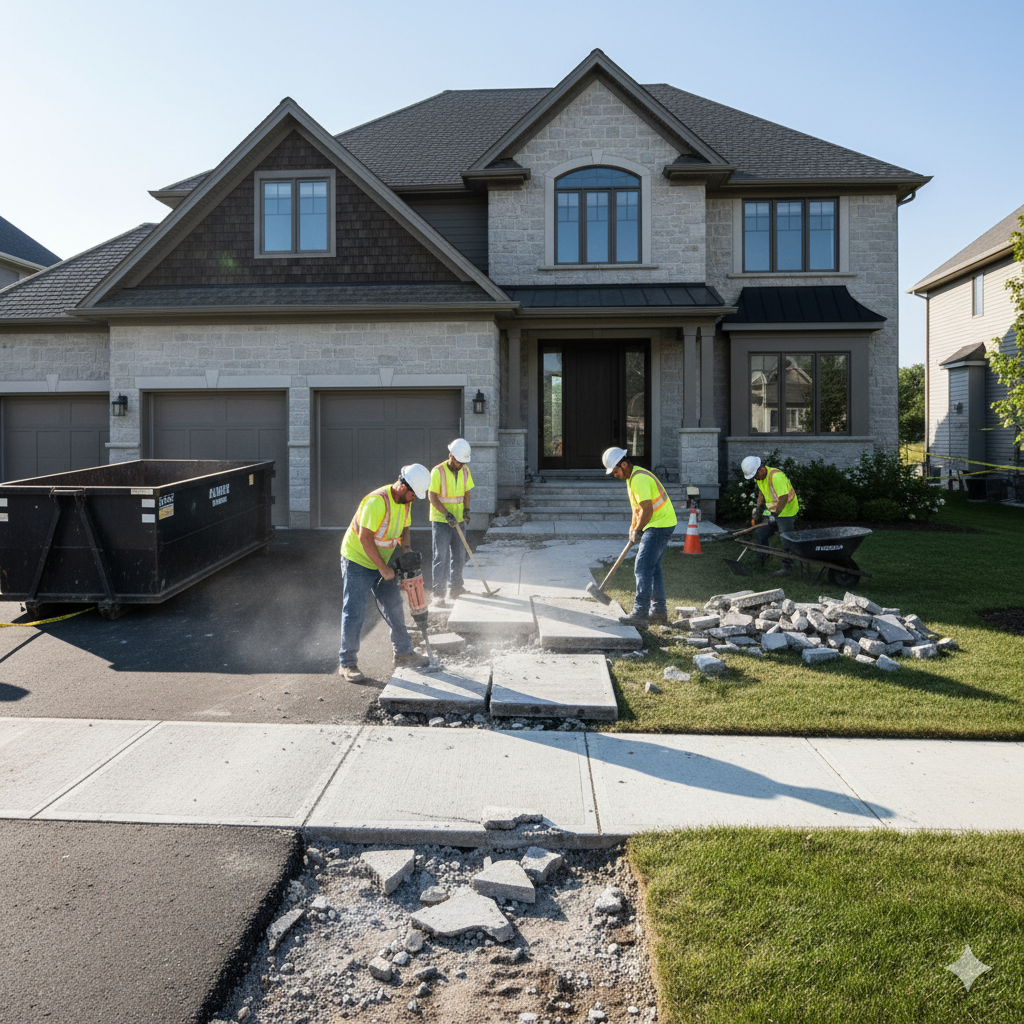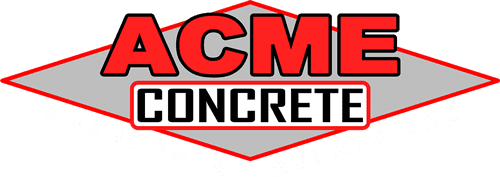
Homeowners searching how to fix sidewalk trip hazards in the Chicago suburbs usually want two things: a safe, code-friendly solution and minimal downtime. This guide explains when to replace sidewalk panels and when polyurethane lifting restores a smooth, compliant walking surface fast—plus what it really costs and whether permits are needed.
Key Takeaways for Sidewalk Repairs (Q&A)
How much does Chicago sidewalk replacement vs. polyurethane lifting cost?
New sidewalk installation commonly totals $2,500–$5,000 depending on length, width, finish, access, and subgrade corrections; polyurethane lifting typically runs $500–$1,000 for most situations.
Do you need a permit for sidewalk concrete lifting in the Chicago suburbs?
Generally no permit is required for lifting since nothing new is being constructed; replacement almost always requires permits, which adds time and cost.
Is sidewalk replacement or polyurethane lifting better for trip hazards in Chicagoland?
If panels are intact but uneven, lifting usually fixes the height difference quickly; broken, crumbling, or missing sections may point to replacement.
Does polyurethane lifting help with IAC/IRC compliance for residential sidewalks?
Yes—lifting reduces abrupt height changes so the surface is uniform; final compliance always depends on local code and inspection.
Sidewalk Replacement vs. Polyurethane Lifting (Chicago Suburbs)
Sidewalk trip hazards aren’t just an eyesore—they’re a safety and liability issue. Around Chicago, offsets often come from soil settlement, wash-out, tree roots, or freeze–thaw movement. The good news: many uneven panels are still structurally sound. When the concrete is intact but one panel sits higher or lower than its neighbor, polyurethane lifting can realign slabs without tear-out and restore a smooth, code-friendly surface fast.
Cost, downtime, and what to expect
Let’s talk real numbers. New sidewalks often cost $2,500–$5,000, and that swings with length, width, finish, how accessible the site is, and whether the subgrade needs elevation changes to correct drainage. Raising settled panels typically costs $500–$1,000 in most situations. Beyond price, downtime is where lifting shines: foam cures in about 15–30 minutes, so you’re usually back in service the same day instead of waiting days for new concrete to set and weeks for a full cure.
Permitting and inspections
Most towns don’t require permits for polyurethane lifting because you’re not constructing a new sidewalk—you’re restoring an existing one. Replacement is different: expect permits, potential inspections, and coordination that add both time and cost to the project. If the sidewalk ties into a city-controlled section, your contractor will outline any additional steps.
What “compliance” really means here
Local building departments pull from established codes to require safe, uniform walking surfaces. Practically, that means removing abrupt height changes and keeping transitions smooth. Lifting fills underlying voids and gently brings panels back into alignment so edges meet cleanly. Because sidewalks often tie into driveways, porches, or municipal walks, the crew also checks that transitions are safe and drain correctly once everything is level.
Why polyurethane lifting works so well on sidewalks
The process is precise. Technicians drill small, discreet holes, inject high-density polyurethane under the slab, and lift carefully until the edges align. The material expands to fill voids and support the load, then cures in 15–30 minutes. You get same-day use, minimal mess, and a clean finish—especially helpful where panels meet at driveways or porches and you need a smooth transition. For a closer look at the method, see the Smart Lift System.
When replacement is the right call
If a slab is severely fractured, missing chunks, or lifted by a tree root you’re not removing, replacement may be the better path. Likewise, if your’e having other sections of concrete replaced, replacing a few more sections may prove to be an economical choice.
Materials, warranty, and long-term performance
The polyurethane we use for lifting is waterproof and inert, so it won’t wash out or rot. It stabilizes base soils and supports the slab over time. ACME backs our lifting work with a solid warranty, and crews can seal cracks and joints afterward to keep water out of the base—helping prevent a repeat trip hazard.
ACME specializes in polyurethane lifting and stabilization; we don’t pour new concrete. If replacement is truly the better solution, we’ll say so—if lifting can fix it today, we’ll show you.
FAQ's
How do I know if my sidewalk is a candidate for lifting instead of replacement?
If panels are mostly intact but uneven at the joints, lifting is a strong option. A specialist will check how far it’s dropped and look for drainage issues. When the surface is badly spalled or cracked through, replacement is recommended.
Will lifting fix ponding water on the sidewalk?
Often, yes. By restoring the proper slope, lifting can improve drainage toward the street or away from the house. If the grade is fundamentally wrong or a low spot spans many panels, a mix of lifting and targeted replacement may be considered.
Is the foam safe around landscaping?
The material is inert and does not leach. Landscaping disturbance is minimal. Small injection points are patched after the lift, and the area is usable about 15–30 minutes later.
What about sidewalks that meet my driveway or porch—can those transitions be smoothed too?
Yes. One advantage of lifting is precise control. Crews can dial in the height at transitions so you don’t end up with a step at the driveway or a lip at the porch. If the adjacent structure has its own issues, they’ll recommend the right repair there as well.
Do you replace sidewalks if lifting isn’t possible?
ACME focuses on lifting and stabilization rather than new pours. During an estimate, you’ll get a clear recommendation—if replacement is warranted, we’ll explain why.
For trip hazards and uneven panels, ACME’s polyurethane lifts align slabs precisely and cure in minutes, so your walkway is safe and comfortable the same day. Our Smart Lift System® addresses the voids that caused settlement, and every residential lift is protected by a 10-year warranty. Expect straight answers, clean work, and results that last.
